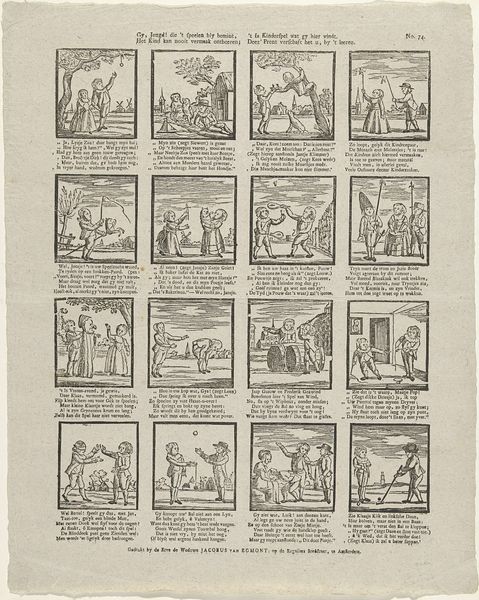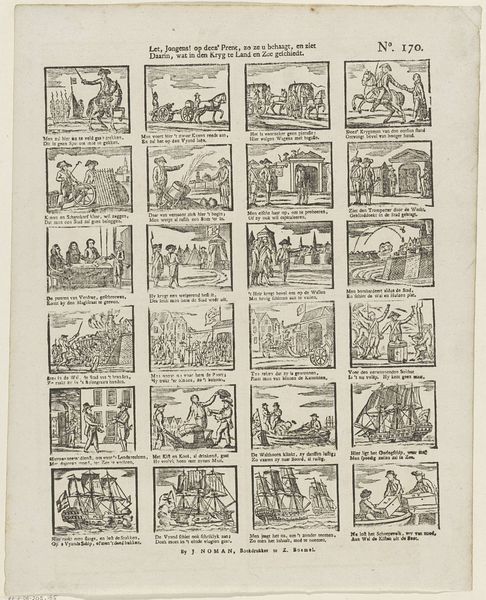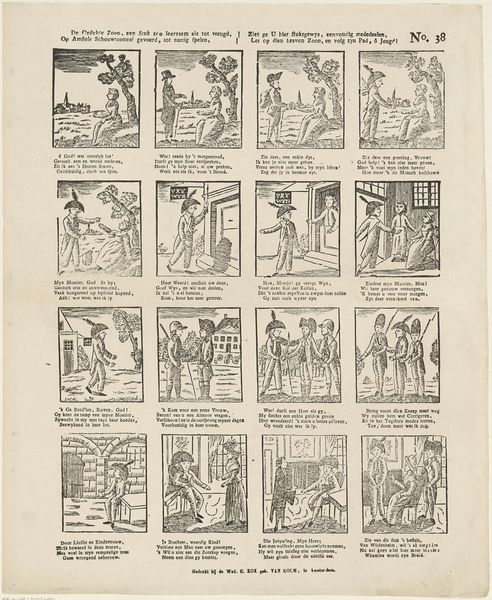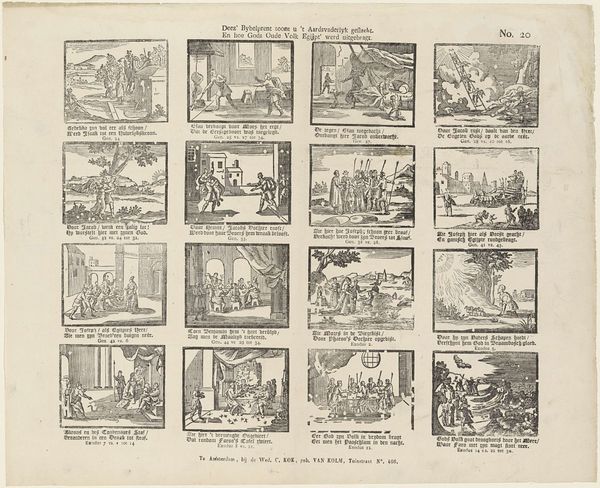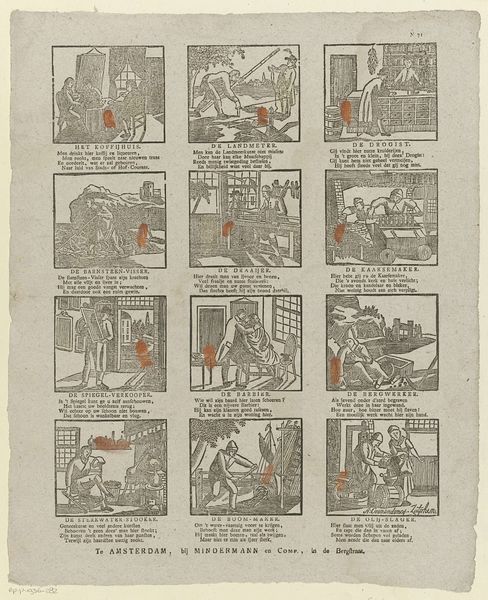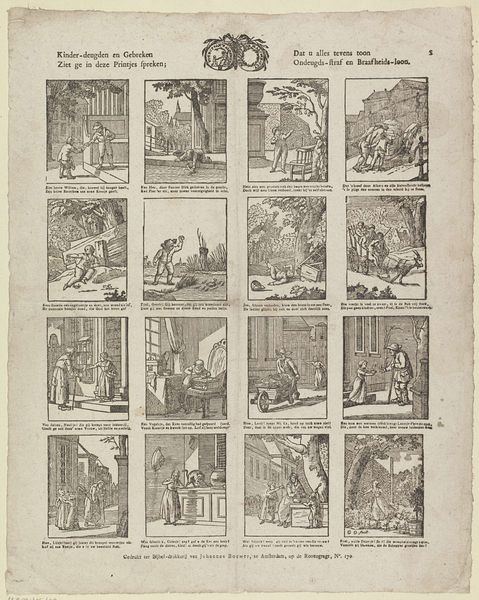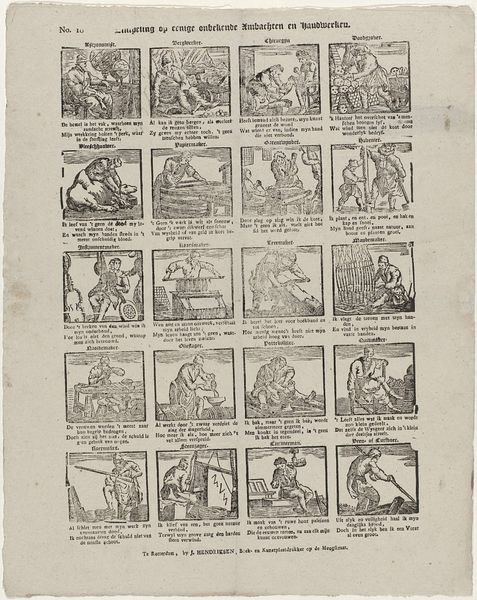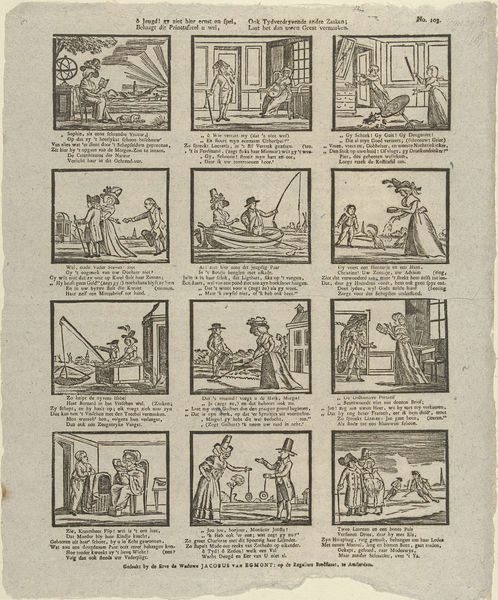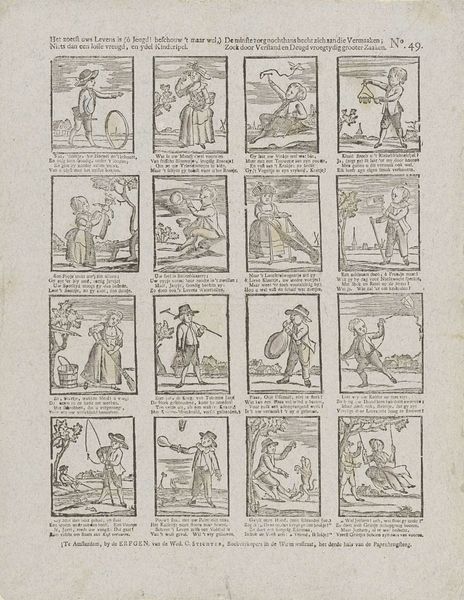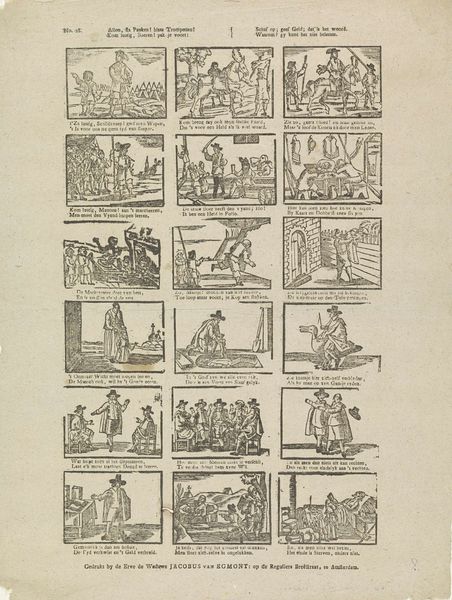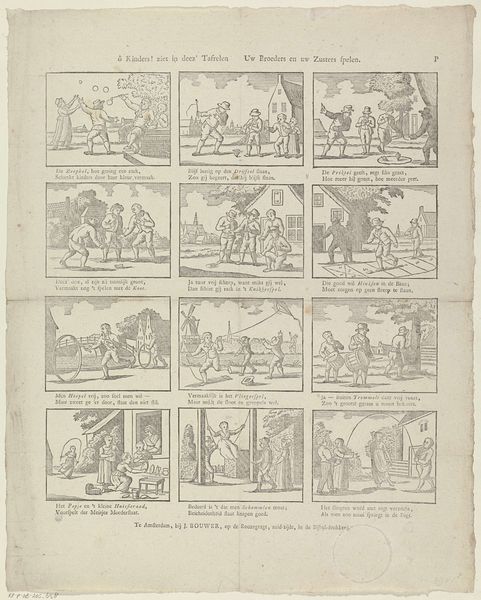
print, paper, ink, engraving
#
narrative-art
# print
#
paper
#
ink
#
comic
#
engraving
Dimensions: height 390 mm, width 331 mm
Copyright: Rijks Museum: Open Domain
Editor: This is *Klein Duimpje*, dating from sometime between 1827 and 1894, and it’s here at the Rijksmuseum. The artist is M. Hemeleers-van Houter. It's an engraving, made with ink on paper, and it tells a story across many panels, a bit like a comic strip. It feels very folksy. What do you see in this piece? Curator: The layout is particularly compelling. We’re presented with a grid, but each individual scene is a little vignette containing fragments of a familiar narrative. Do you recognize any recurring symbols or motifs throughout these frames? Editor: Well, there are definitely elements of rural life… like, animals, simple homes… and people in what looks like working clothes. Curator: Exactly. And those repeated images establish the engraving’s thematic core – a focus on the trials and triumphs of the common person. Each image adds to the narrative thread, building to its totality. Editor: So the individual panels, while small, each contribute to a much larger story. Curator: Precisely. This work exists almost like a tapestry, in which recurring visual elements form a sort of cultural memory…a familiar pattern repeated to embed meaning. Consider the story of "Little Thumb," repeated over and over – does the tale’s iconography change the telling? How do shifts or changes in visual depictions reflect larger changes in societal memory, perhaps? Editor: I guess it highlights the flexibility of narrative – how the core story stays the same, but the way we see it evolves over time, depending on cultural and individual lenses. Curator: It’s an interesting notion to keep in mind for this type of popular imagery, for sure.
Comments
No comments
Be the first to comment and join the conversation on the ultimate creative platform.
